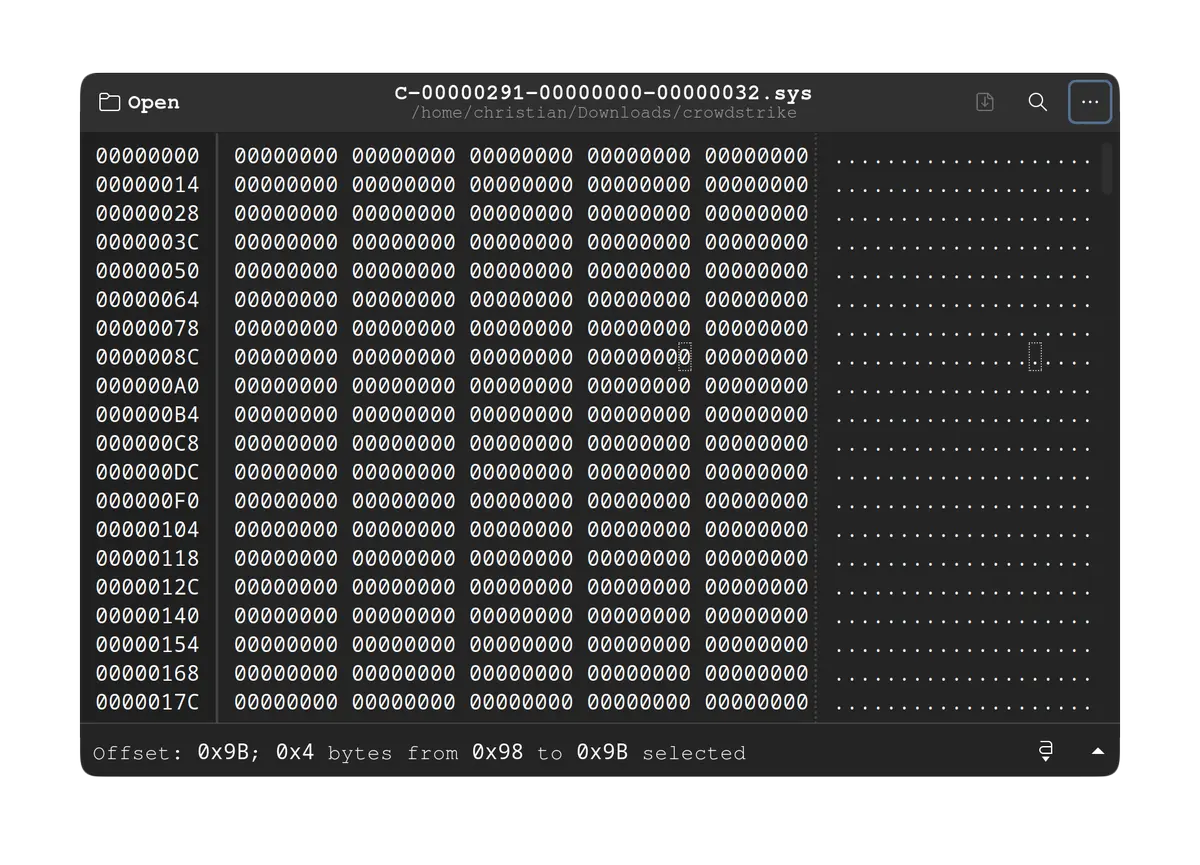…according to a Twitter post by the Chief Informational Security Officer of Grand Canyon Education.
So, does anyone else find it odd that the file that caused everything CrowdStrike to freak out, C-00000291-
00000000-00000032.sys was 42KB of blank/null values, while the replacement file C-00000291-00000000-
00000.033.sys was 35KB and looked like a normal, if not obfuscated sys/.conf file?
Also, apparently CrowdStrike had at least 5 hours to work on the problem between the time it was discovered and the time it was fixed.



A single server not booting should not usually lead to a loss of service as you should always run some sort of redundancy.
I’m a dev for a medium-sized PSP that due to our customers does occasionally get targetted by malicious actors, including state actors. We build our services to be highly available, e.g. a server not booting would automatically do a failover to another one, and if that fails several alerts will go off so that the sysadmins can investigate.
Temporary loss of service does lead to reputational damage, but if contained most of our customers tend to be understanding. However, if a malicious actor could gain entry to our systems the damage could be incredibly severe (depending on what they manage to access of course), so much so that we prefer the service to stop rather than continue in a potentially compromised state. What’s worse: service disrupted for an hour or tons of personal data leaked?
Of course, your threat model might be different and a compromised server might not lead to severe damage. But Crowdstrike/Microsoft/whatever may not know that, and thus opt for the most “secure” option, which is to stop the boot process.